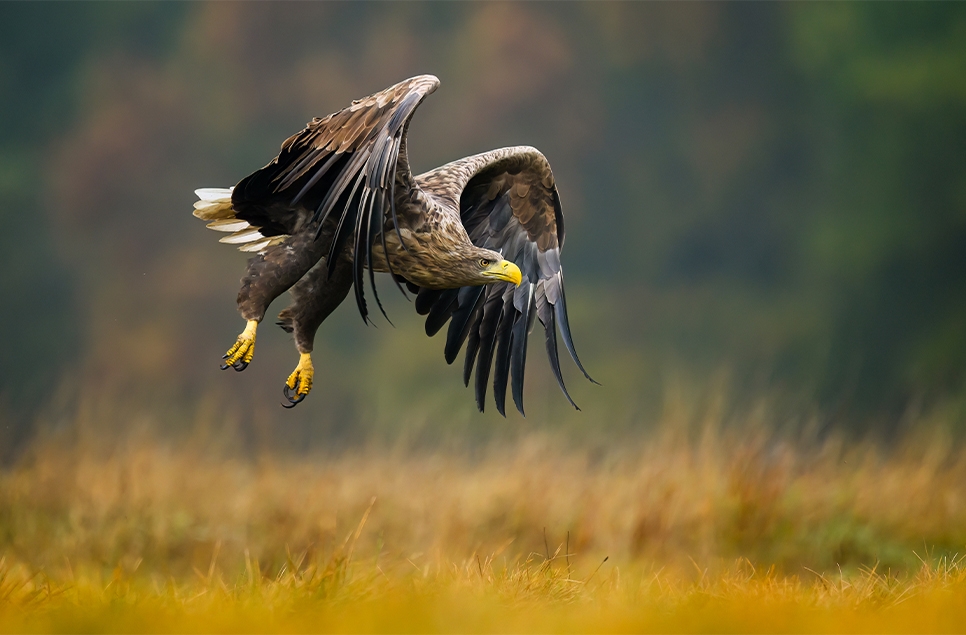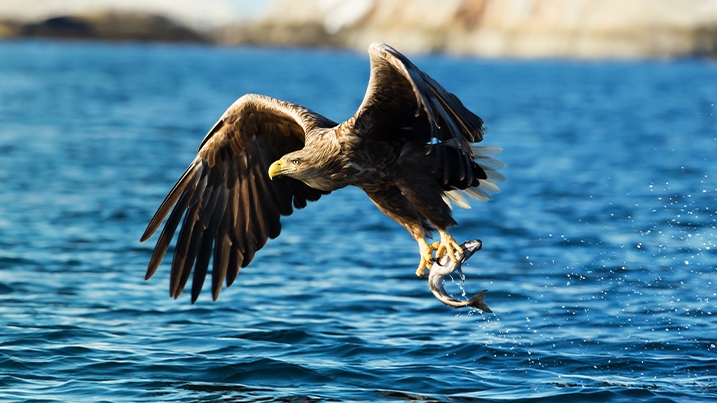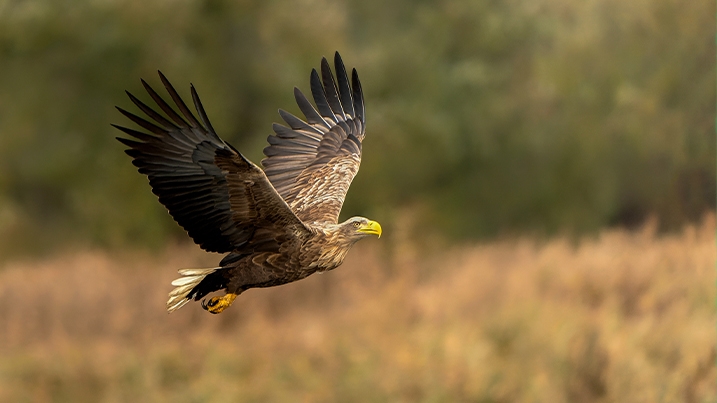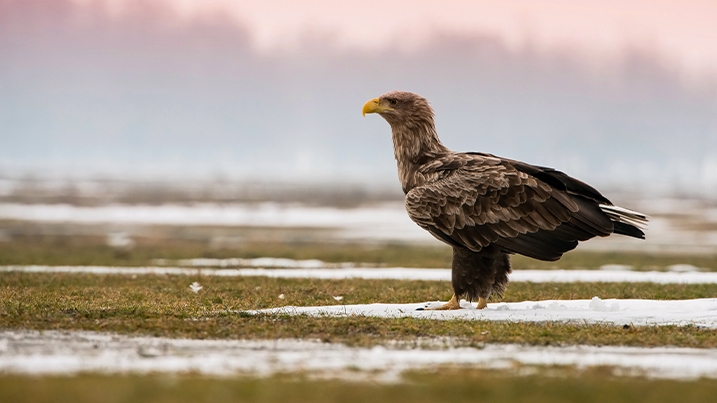White-tailed eagles: powerful protectors of wetland health
Imagine standing on a misty shoreline, gazing up as a white-tailed eagle soars overhead. With a wingspan stretching over 2.5 meters, this magnificent bird casts a powerful presence in the sky, stirring something ancient and awe-inspiring within us.

For some, that power may seem daunting, perhaps even threatening to other wildlife. But the truth is that these eagles bring balance, not chaos, to our ecosystems. As apex predators, they play a crucial role in maintaining the health and stability of our wetlands.
Otherwise known as sea eagles, these birds are the protectors of our wild spaces. They help regulate wildlife populations, boost biodiversity, and support the intricate web of life in our wetlands. But how?
A vital role in the web of life
White-tailed eagles are the largest eagles in Europe and sit at the top of their food chain. This means they help keep certain prey species in check, preventing overpopulation that can put a strain on habitats. When apex predators like these eagles thrive, they bring what ecologists call “top-down” control to the ecosystem, which nurtures biodiversity and supports the overall health of our wetlands.
Let’s explore how these impressive birds make such a difference.

1. Maintaining healthy fish and bird populations
These eagles mainly feed on fish and ducks and geese, but they tend to focus on the weaker, sick, or older individuals. By hunting vulnerable animals, they help strengthen the overall health of fish and bird populations. Imagine a white-tailed eagle swooping down to catch a sick fish - this isn’t just nature at work; it’s a safeguard against the spread of diseases that could impact entire waterways.

2. Recycling nutrients for a thriving wetland
As large, fish hunters, white-tailed eagles contribute to nutrient recycling within wetlands. After feeding, they often leave remnants behind, which scavengers like foxes, otters, and smaller birds of prey then consume. This scavenging process brings nutrients back into the soil and water, enriching plant life and supporting invertebrate populations. In this way, white-tailed eagles not only support smaller predators but also help create a thriving, interconnected food chain.
3. Restoring our wetlands
Wetlands are some of our most threatened ecosystems, despite playing such a vital role in protecting our climate, water quality, and biodiversity. White-tailed eagles support this delicate balance by controlling prey populations, which helps prevent overgrazing and reduces soil erosion. In essence, these majestic birds are nature’s allies in the restoration of healthy wetlands.
Debunking the Myths
Are white-tailed eagles a threat to livestock?
It’s a common worry that these eagles might target livestock, but research shows otherwise. Since the release of 37 white-tailed eagles on the Isle of Wight in 2019, there haven’t been any reports of them attacking livestock or poultry . Instead, they focus on wild fish and birds, rarely taking small mammals or scavenging from already-dead animals. With a rich abundance of wild prey in places like Southeast Wales and the Severn Estuary, these eagles are unlikely to pose any threat to farms or domestic animals.
Do white-tailed eagles endanger ducks and geese?
No, these eagles don’t pose a significant risk to duck or geese populations. In fact, studies from Europe show that they cause similar or less disturbance than other predators like peregrine falcons, marsh harriers or black-backed gulls. They’re inactive for much of the day, spending 93% of their time perching, and generally employ a ‘sit-and-wait’ strategy, hunting only seasonally abundant prey like grey mullet, northern pike, and common ducks and geese. Often, the ones they take are sick or injured, meaning healthy populations remain undisturbed.

Do white-tailed eagles threaten small birds or fish stocks?
White-tailed eagles pose no threat to small birds and actually help control predators like carrion crows and magpies, which are more likely to impact smaller bird populations. As for fish stocks, these eagles tend to target non-commercial species or weakened fish, which means their hunting actually supports healthier fish populations rather than depleting them.
What is WWT doing to bring missing apex predators like the white-tailed eagle back to the UK’s wetlands?
Once native to the UK, white-tailed eagles were driven to extinction by 1918 due to widespread persecution. Now, WWT is joining forces with Eagle Reintroduction Wales, Durrell Wildlife Conservation Trust, and Gwent Wildlife Trust, to support efforts to bring them back, so that once again we’ll see these magnificent birds soaring over the coastlines of south-east Wales and the Severn Estuary.
White-tailed eagles are already thriving in parts of Scotland, Ireland, and England. It’s our hope this latest effort will connect these groups and also link them with other recovering populations across Europe.
As these powerful protectors return to their rightful place in our wetlands, we can appreciate the intricate ways they help sustain the wild beauty of these landscapes. By supporting their reintroduction, we’re nurturing not just a single species, but an entire ecosystem – bringing life and balance back to our wetlands, one majestic wingspan at a time.
Follow us on our social channels to keep up to date with our progress on this project.



